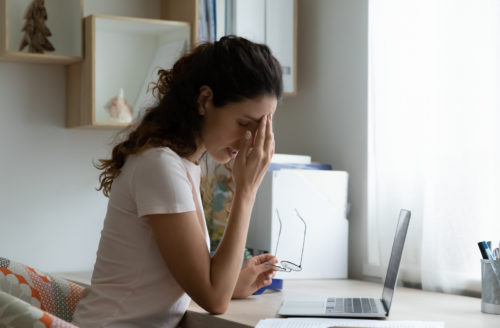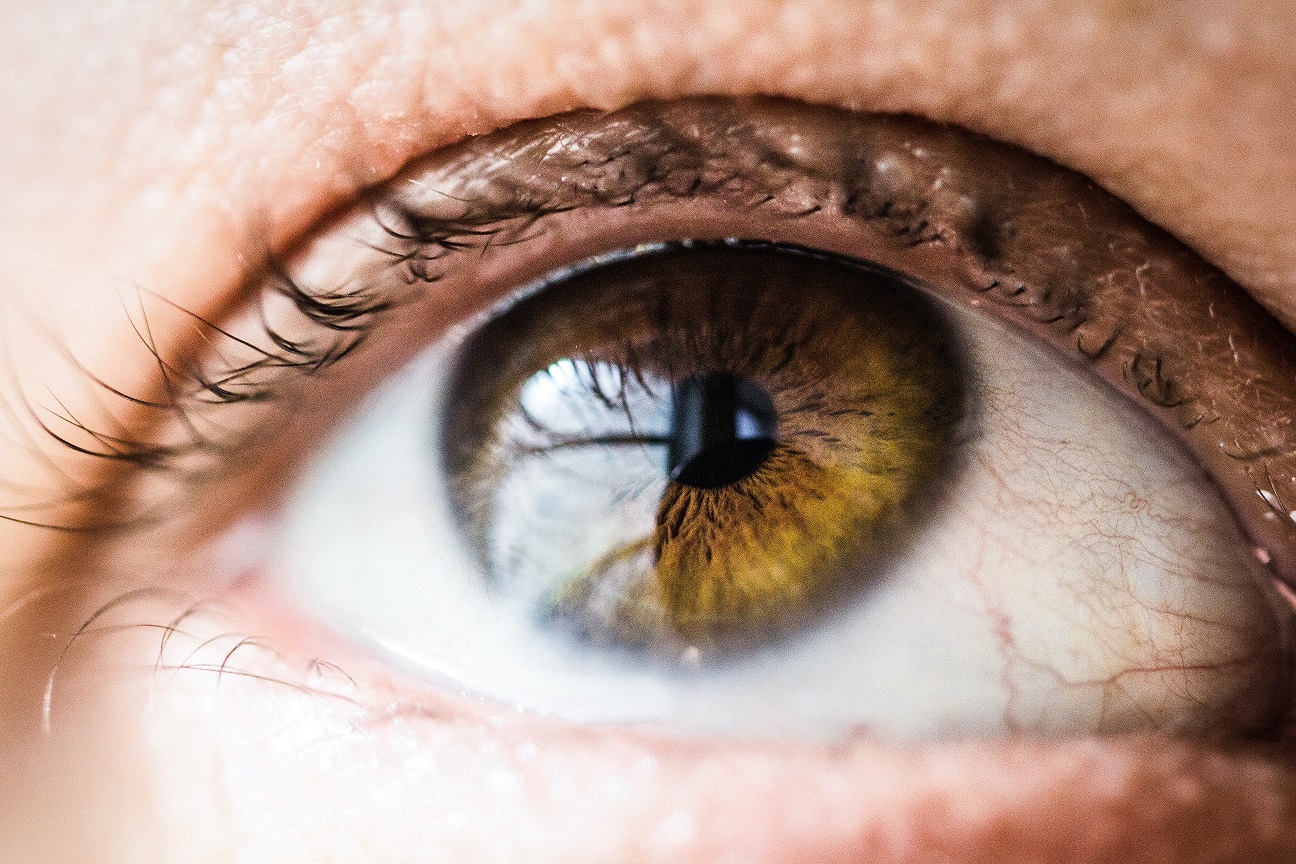It’s common for many of us to feel a strain on our vision after long sessions on the computer. Your eyes might feel dried out or fatigued, but why does this happen?
Today’s digital age often means constantly staring at computer screens and digital devices. Recognizing the symptoms of dry eye disease and taking action to help your vision, is the first step to seeing comfortably again. Let’s explore why computers take a toll on our vision.
Understanding Computer Vision Syndrome
More than ever, our eyes are being asked to focus on very near things for long periods. Whether it’s a cell phone or a laptop, many of us spend countless hours a day looking at images and details on digital screens. A negative result of this behaviour is known as computer vision syndrome (CVS).
Also called digital eye strain, CVS impacts the way your eyes feel and perform. People with existing eye conditions may notice even more discomfort using computers frequently. CVS is impacted by how much time you spend on digital screens and can also affect children.
Symptoms of Digital Eye Strain
Symptoms of computer vision syndrome include:
- Eye strain
- Dry eyes
- Headaches
- Blurred vision
- Neck and back pain
- Fatigue
Dry Eye & Computer Use
According to some surveys, Canadians spend over 11 hours per day looking at digital screens, including cell phones, tablets, laptops, and desktop computers. Because it’s often impossible to avoid computers altogether, we need to understand how dry eyes can be influenced by CVS.
Lower Blink Rate
Studies have shown that people blink about 50% less when using a computer. The average is about 5 times per minute on a screen, compared with 12 times per minute during other daily activities. When we blink, it carries tears from our glands to our eye’s surface. Tears are an integral part of keeping our eyes moisturized and healthy so a lower blink rate will make your eyes feel dry and irritated.
Lack of Hydration
Intense online gaming or getting an essay finished can sometimes take hours. And it’s not uncommon to ignore some other things our bodies tell us when we’re locked into the task at hand. Hydration is one of those things.
Doctors recommend that people drink anywhere from 2-4 litres of water every day, depending on their size. Dehydration will exaggerate dry eye symptoms, so drink plenty of water while you surf the web!

Eye Strain & Computer Use
Extended periods of computer usage not only dry your eyes out but can also cause fatigue and eye strain. Even if the original cause of your eye strain is from another source, using digital screens often can worsen your symptoms.
Too Much Near-Vision Work
When we stare at a cell phone or computer for a long time it forces specific eye muscles to stay engaged during that time. Like any muscle in the body, the muscles that move our eyes and assist in focusing become fatigued when overused.
Many parts of our day require dynamic shifts in our eye focus direction and distance. This prevents eye muscles from becoming strained in one specific direction or movement for too long. But computer usage tends to keep our eyes focused on one specific area for a long time. This strains the eyes and leads to other uncomfortable symptoms.
Squinting From Screen Glare
Depending on the time of day, where the windows are in the room, and how your computer is situated, you might have glare coming off your screen. Glare describes bright light that is more intense than the light your eyes are currently adapted to. It makes us squint to try and focus.
Even slight screen glare will cause you to squint, forcing eye muscles to strain while you focus. Doing this throughout the day leads to eye strain and general discomfort. Try to position your workstation in a location that is not affected by changing light levels from an open window. You may also want to try using an anti-glare screen if you find yourself squinting a lot.
Squinting From Poor Vision
If you have an undiagnosed vision disorder or an outdated prescription, there’s a good chance you are squinting and struggling to see your computer screen. Farsighted people will have a hard time accurately focusing on a digital screen without the right corrective eyewear. Squinting strains the muscles required for vision and makes your eyes feel fatigued.
Annual eye exams keep your prescription up to date and accurate. Optometrists also get a chance to diagnose eye conditions that could be affecting your ability to focus on computer screens. A lot of computer time can highlight errors in your vision and lead to eye strain.
How to Help Your Eyes
Regular eye exams are a necessary routine for understanding how much strain and damage your eyes are sustaining each year. But there are some techniques you can try at home to reduce the effects of computer vision syndrome.
The 20-20-20 Rule
All optometrists agree that this simple rule will help reduce eye strain when working on your computer. Every 20 minutes, take a 20 second break, and stare at something 20 feet away. Print this page and post it at your desk if a visual reminder will help you follow the 20-20-20 Rule.
Pay Attention to Posture
Maintaining the right posture while working on your computer can help reduce neck pain, headaches, and eye strain. Keep your screen at eye level and an arm’s length from your face. Your back should be straight, about 90 degrees from your writing surface, with your thighs parallel to the floor.
Activate Night Mode
Many devices these days have a “night mode” or “soft light mode” that diminishes blue light emissions. This setting is especially useful before bed or when you are using a digital screen in low-light conditions. You may notice this setting helps reduce eye strain.
Android users can follow the instructions here to activate Night Mode.
iPhone users can use these instructions for activating Night Shift.
Try Using an E-Reader
If you spend a lot of time reading documents or books on your tablet or laptop you should think about investing in an e-reader. Unlike most electronic screens that are backlit, most e-readers illuminate displays from the side. You may find this reduces eye fatigue when reading for long periods.
Adapt Your Eyes for the Modern World
Follow the methods recommended by optometrists to reduce the negative impact of computer screens on your vision. If you neglect to prepare the right conditions for digital screen viewing it may lead to dry eye and eye strain.
While it’s not very practical for most people to simply stop using computers, you can help reduce vision discomfort by understanding how digital screens stress our eyes. If you experience chronic dry eye or constant eye strain it’s always best to visit your eye doctor. Just remember that your eyes need to shut off before your laptop does, and be conscious of your vision limitations when using computers.










